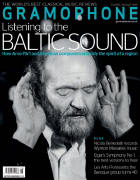Texte paru dans: / Appeared in: |
|
|
Outil de traduction (Très approximatif) |
|
|
Reviewer:
David
Threasher This is, in certain ways, a most peculiar project. Jordi Savall’s approach to Mozart’s three final symphonies bears a clear debt (acknowledged) to that of Nikolaus Harnoncourt, which appeared on disc five years ago. Harnoncourt posited that these three works, rather than being discrete exercises in symphonic form, in fact form a trilogy, bound inseparably by thematic reminiscences and a narrative progress. Harnoncourt gave his recording the title ‘Mozart’s Instrumental Oratorium’; Savall calls his Mozart’s ‘Symphonic Testament’. Which is fine. Savall’s awareness of the musicological and historical significance of this music is as deep and considered – and as personal – as anybody’s. So, in order to hear the symphonies as a 12-movement whole, without a break, No 40 not only follows No 39 on disc 1 but is also duplicated on disc 2, preceding the Jupiter. Savall also suggests hearing the Masonic Funeral Music (a work from three years earlier than the symphonies) after the Jupiter, although it is placed at the end of disc 1, after (and thus also before) Symphony No 40 – and is not a new recording but one from the Mozart bicentenary year of 1991 which originally appeared as an appendix to Savall’s recording of the Requiem. In these days of downloading and streaming, these eccentricities of ordering seem rather perplexing. It might have given a still fuller picture to give No 40 in its two versions – the first as conceived without clarinets, the second (as here) with clarinets assigned a lion’s share of the oboe-writing. Nevertheless, there are many things about the recording that are very much in its favour. The strings have a particularly inviting elastic, ‘gutty’ sound, free of the sparkle and sharp attack of metal-strung instruments. The mellow-toned period woodwind are particularly beautiful, especially the combination of clarinets and flute, while horns are far more than just sustaining instruments: listen to their commentaries in No 39’s slow movement from 2'52" and 4'47". The oddity here lies with the trumpets and timpani: trumpets seem to want to try and hold the music back – and it’s not as if Savall is a particular speed merchant anyway – while the drums, frustratingly, often sound fractionally behind the beat. The opening movements of Nos 39 and 41 suffer most from this. The acoustic of the Collégiale de Cardona, Catalonia, has a long decay and plenty of bass boom, enabling the string section (6.5.3.3.2) to sound bigger than it is. The older recording of the Masonic Funeral Music doesn’t have quite sufficient weight of sound either to match the symphonies or to imbue the work with the despairing hollowness it needs, as exemplified by the classic Kertész recording (Decca, 10/69). All repeats in the symphonies are observed. Alia Vox’s presentation is characteristically sumptuous. Concerts connected with this programme must have been quite an experience; perhaps the recording would have worked better on (single-disc) DVD. |
|

/8435408099349_small.jpg)


